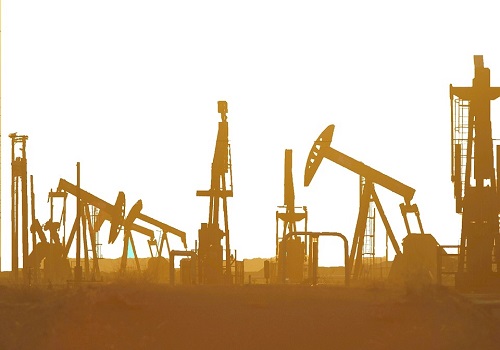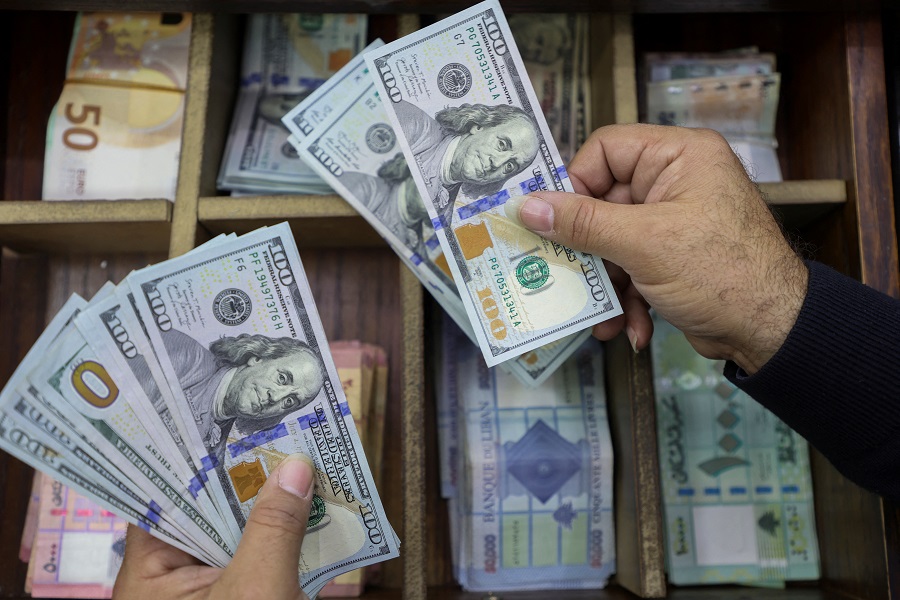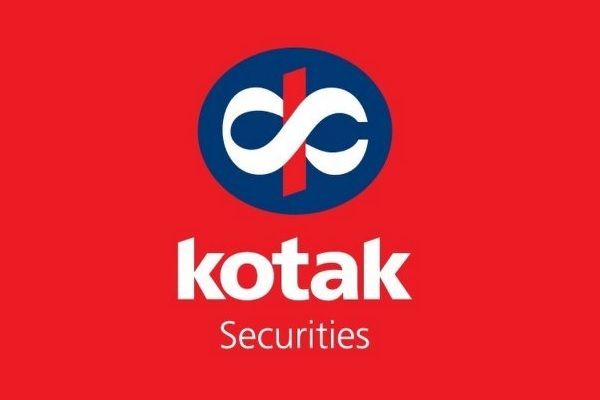Jeera trading range for the day is 58240-60820 - Kedia Advisory

Gold
Gold prices declined by -0.43% to settle at 57,600 per ounce, driven by concerns of potential U.S. interest rate hikes following a slowdown in core price inflation in August. The core PCE price index increased by 3.9% annually in August, down from 4.3% in July, although the headline index rose to 3.5% year-on-year, up from 3.4% in July. Despite this, the U.S. economy continued to grow steadily in Q2. In the global gold market, physical gold premiums in China eased slightly but remained high due to strong investor demand amid a weaker yuan and economic uncertainties. Conversely, lower gold prices in India failed to stimulate retail purchases. Chinese dealers charged premiums of $80 to $100 per ounce over global spot prices, compared to the range of $60 to $130 the previous week. China's gold imports via Hong Kong rebounded in August, likely boosted by fresh quotas to local banks. In Hong Kong, gold was sold with premiums ranging from $2.25 to $3.25, while in Singapore, premiums were in the range of $1.75 to $2.75. Dealers in India were charging premiums of up to $4 per ounce over official domestic prices, up from last week's premium of $2. From a technical perspective, the gold market is experiencing increased selling pressure, with open interest rising by 3.58% to settle at 15,897. Prices fell by -246 rupees. Support for gold is currently at 57,345, and a break below this level could test 57,095. Conversely, resistance is expected at 58,040, and a move above this level could lead to a test of 58,485.
Trading Ideas:
* Gold trading range for the day is 57095-58485.
*Gold pared gains on prospects of higher U.S. interest rates
* Data showed core price inflation slowed in August
* Physical gold premiums eased slightly in, but remained elevated on high investor demand amid a broadly weaker yuan
Silver
Silver faced a decline of -1.05%, settling at 69,857, mainly due to multiple pressures. These included the Federal Reserve's cautious stance, concerns about a potential U.S. government shutdown, and worries about reduced industrial demand linked to China's slowing economy. Inflation, measured by the core PCE price index, hit 3.9% in August, the lowest since September 2021, with the headline rate at 3.5%. Personal income and outlays also rose as expected. Despite these factors, silver prices remained near their lowest point since March 10th, influenced by a strong U.S. dollar and rising Treasury yields, reflecting expectations of a prolonged restrictive monetary policy by the Federal Reserve. However, the future looks brighter for silver due to growing demand from the solar industry, limited supply growth from mines, and its various industrial applications, including electronics, electric vehicles, and solar panels, driven by the global shift towards green energy. In 2022, the silver market faced a significant deficit of 237.7 million ounces, according to the Silver Institute, and these deficits are expected to persist in the coming years. From a technical standpoint, fresh selling pressure is evident, with open interest increasing by 2.46% to reach 24,426, and prices falling by -743 rupees. Support for silver is currently at 68,665, and a break below this level could lead to a test of 67,475. Conversely, resistance is expected at 72,135, with a potential price test at 74,415 if it is breached.
Trading Ideas:
* Silver trading range for the day is 67475-74415.
* Silver dropped pressured by the Fed's hawkish pause, the potential U.S. government shutdown
* US core PCE price index, rose by 3.9% in August the lowest since September 2021
* Robust demand from the solar industry and limited supply growth from mines will buoy silver prices.
Crude oil
Crude oil saw a decline of -1.06% to settle at 7542 as profit-taking and expectations of increased supply from Russia and Saudi Arabia overshadowed positive demand forecasts during China's Golden Week holiday. In July, U.S. crude oil shipments by rail dropped by 9,000 barrels per day (bpd) to 237,000 bpd, while domestic shipments rose by 18,000 bpd to 199,000 bpd. Shipments from Canada to the U.S. fell by 27,000 bpd to 38,000 bpd. Despite the oil market approaching the $100 per barrel mark, investors are cautious due to ongoing economic concerns. Saudi Arabia and Russia extended a supply cut of 1.3 million barrels per day through the year's end, raising concerns of a broader market deficit in the fourth quarter. Russia also limited fuel exports to stabilize its domestic market, and U.S. crude inventories continued to decline. The upcoming OPEC meeting on October 4 is eagerly anticipated for insight into production policies. Investors remain watchful of global economic uncertainties and the hawkish U.S. monetary policy outlook. From a technical perspective, there's been long liquidation with a drop in open interest by -8.41% to 7,036, and prices fell by -81 rupees. Support for crude oil is at 7464, with potential testing of 7387 below it. Resistance is anticipated at 7677, and a move above could lead to testing at 7813.
Trading Ideas:
* Crudeoil trading range for the day is 7387-7813.
* Crude oil fell on profit-taking and expectations of supply increases by Russia and Saudi Arabia.
* Traders remained cautious about heightened global economic uncertainties and a hawkish monetary policy outlook in the US.
* U.S. shipments of crude oil via rail in July fell by 9,000 barrels per day (bpd) from the previous month to 237,000 bpd
Natural gas
Natural gas posted a modest gain of 0.49%, settling at 245.9, driven by robust demand and a slight reduction in production. The market found support from record exports to Mexico and increased gas flow to U.S. liquefied natural gas (LNG) export facilities, despite some undergoing maintenance. Notably, gas production in the lower 48 U.S. states dipped to 102.1 billion cubic feet per day (bcfd) in September from a record 102.3 bcfd in August. Meteorologists predict mostly warmer-than-normal weather across the lower 48 states through October 14, except for a few cooler days around October 7-11. This expected mild weather led to a forecast of declining U.S. gas demand, including exports, from 95.7 bcfd this week to 94.8 bcfd next week as power generators reduce gas usage for air conditioning. The U.S. Energy Information Administration (EIA) reported that utilities injected 90 billion cubic feet (bcf) of gas into storage for the week ending September 22. As the weather gets milder, LSEG forecasts U.S. gas demand, including exports, to slide from 95.6 bcfd this week to 95.1 bcfd next week. From a technical perspective, fresh buying activity was observed, with open interest rising by 0.73% to 20,074, and prices gaining 1.2 rupees. Support for natural gas is currently at 239.8, with the potential to test 233.7 if it breaks below. Resistance is expected at 250.2, with the possibility of testing 254.5 upon breaking through.
Trading Ideas:
* Naturalgas trading range for the day is 233.7-254.5.
* Natural gas gains due to strong demand and slightly reduced production
* Support also seen amid record exports to Mexico and a rise in the amount of gas flowing to LNG export plants .
* Average gas output in the lower 48 U.S. states has slid to 102.1 billion cubic feet per day (bcfd) so far in September
Copper
Copper closed with a 0.38% gain at 722.45 as concerns grew over significant upcoming copper shortages. Current production levels are struggling to meet rising demand, particularly for electrification projects. Notably, LME copper inventories surged by 140% this quarter to 167,825 tons, the largest quarterly increase in 18 years. Chile, the world's leading copper producer, reported a 2.7% year-on-year increase in copper output in August, reaching 434,206 metric tons. LME data revealed a slight rise in the level of copper canceled warrants, currently at 1,575 tons, with a 0.94% increase in proportion. Registered warrants continued to grow, totaling 165,275 mt. Maximo Pacheco, Chairman of Chile's Codelco, indicated that copper production would not continue to decline, with a recovery expected to commence next year. Pacheco emphasized the importance of not delaying ongoing development projects. In July, the global refined copper market displayed a 19,000 metric ton deficit, a decrease from June's 72,000 metric ton deficit, as reported by the International Copper Study Group (ICSG). However, for the first seven months of the year, there was a surplus of 215,000 metric tons, compared to a 254,000 metric ton deficit in the same period the previous year, according to the ICSG. From a technical standpoint, there was short covering activity, with a 16.26% drop in open interest to 5,990 and a price increase of 2.75 rupees. Support for copper stands at 719, with a potential test of 715.5 below it. Resistance is expected at 727.6, with a chance of reaching 732.7 upon breaking through.
Trading Ideas:
* Copper trading range for the day is 715.5-732.7.
* Copper gains as market players flagged large incoming copper deficits
* Chile copper output production up 2.7% in August
* LME copper inventories leaped 140% so far this quarter to 167,825 tons, the biggest quarterly increase in 18 years.
Zinc
Zinc made a 1.02% gain, closing at 232.25, driven by favorable data and stimulus measures from China, its top buyer. In July, China recorded its highest monthly zinc intake (76,800 metric tons) since April 2019. While China's domestic zinc production increased this year, low inventory levels and constrained time spreads continue to impact the market. Small and medium-sized zinc mines, particularly in Europe and Australia, face profitability challenges due to high operational costs and falling prices. For instance, Almina-Minas do Alentejo in Aljustrel suspended its zinc mine operations until Q2 2025. However, further gains were limited by cautious sentiment following the Fed's hawkish stance. On the macroeconomic front, US durable goods orders unexpectedly rose by 2% in August, indicating resilient business equipment spending despite higher borrowing costs. In terms of fundamentals, transaction activity in East China declined as downstream buyers completed stockpiling and smelters continued deliveries during holidays. From a technical perspective, fresh buying emerged, with open interest increasing by 2.49% to 5,975, and prices rising by 2.35 rupees. Support for zinc stands at 230.8, with potential testing of 229.4 below it. Resistance is expected at 233.3, with the possibility of reaching 234.4 upon breaking through.
Trading Ideas:
* Zinc trading range for the day is 229.4-234.4.
* Zinc gains amid positive data and stimulus measures from China and expectations of reduced production.
* The recent figures showed China took in 76,800 metric tons of metal in July, the highest monthly tally since April 2019.
* China's domestic output of refined zinc this year has risen, but the market remained impacted by dwindling inventory levels
Aluminium
Aluminium prices experienced a notable upswing, closing 2.17% higher at $211.95 per metric ton yesterday. This surge was attributed to a decrease in exchange stocks and a weakening US dollar. On-warrant aluminium stocks in LME-registered warehouses hit their lowest point since August 2022, dropping to 173,875 metric tons due to fresh cancellations of 51,000 metric tons in South Korea's Gwangyang. Furthermore, Japanese aluminium buyers negotiated a reduced premium of $97 per metric ton over the benchmark price for shipments in October-December, marking a 24% decrease from the previous quarter. Japan's demand for primary aluminium saw a substantial decline, with a 16% drop in imports from a year ago in August, contributing to a 30% decrease for the year. The decrease reflects sluggish demand in the domestic construction sector and weak export activity. Primary aluminium ingot imports from January to August registered a 30% decrease compared to the previous year. In addition to this, Japan's shipment of aluminium sheets and extrusions faced a 5.1% decline in July year-on-year, marking the 17th consecutive month of decline, according to data from the Japan Aluminium Association. From a technical standpoint, the market has seen fresh buying interest, with a 12.57% increase in open interest, closing at 4271. Prices rose by 4.5 rupees. Aluminium is currently finding support at 209, with the potential to test 206 levels if it falls below this mark. On the upside, resistance is likely to be encountered at 213.6, and a breakthrough could lead to prices testing 215.2.
Trading Ideas:
* Aluminium trading range for the day is 206-215.2.
* Aluminium rose amid a decline in exchange stocks and the dollar weakened.
* On-warrant aluminium stocks in LME-registered warehouses fell to 173,875 metric tons, their lowest since August 2022
* Japan's primary aluminium imports fell 16% from a year ago to 95,630 metric tons in August
Cotton candy
Cotton candy prices experienced a slight dip of -0.49% to 60,780 due to profit booking following earlier gains driven by reports of a pink bollworm attack in Haryana's cotton belt. Globally, the cotton industry is grappling with reduced production and consumption in the 2023-24 outlook. In the U.S., the 2023/24 cotton projections indicate higher starting stocks but lower production, exports, and ending stocks. Unexpectedly large warehouse stocks for July 31, 2023, led to an increase in beginning stocks for 2022/23. U.S. cotton production for 2023/24 is forecasted to be 860,000 bales lower, with the Southeast and Southwest regions showing the most significant decline. While consumption remains unchanged from August, exports are down by 200,000 bales, and ending stocks are 100,000 bales lower. Globally, the 2023/24 world cotton projections show lower starting stocks, production, consumption, trade, and ending stocks compared to the previous month's report. India is expected to produce 330 to 340 lakh bales of cotton in the 2023-2024 season starting October 1, with sowing already surpassing 12.7 million hectares. In the current season, 335 lakh bales of cotton have entered the market. Cotton area in Telangana faced challenges due to unfavorable seasonal conditions, but picking is set to gain momentum in November. Technically, the cotton candy market saw long liquidation with unchanged open interest at 116. Prices dropped by -300 rupees. Support is at 60,460, with potential testing of 60,150 on the downside. Resistance is likely at 61,040, and a breakout could lead to testing 61,310.
Trading Ideas:
* Cottoncandy trading range for the day is 60150-61310.
* Cotton dropped on profit booking after prices rose as cotton belt of Haryana, is witnessing an attack by pink bollworm.
* India is expected to see production of 330 lakh to 340 lakh bales in 2023-2024 that begins on October 1.
* China's cotton production was lowered to 5.9 million metric tons on reduced planted area for 2023/24
* In Rajkot, a major spot market, the price ended at 29128 Rupees gained by 0.09 percent.
Turmeric
Turmeric prices bounced back with a substantial 4.83% gain, settling at 14,022. This surge was attributed to low-level buying activity following a recent drop in prices, which was driven by an improved production outlook. Demand for turmeric remained sluggish at current levels, primarily due to the prevalence of inferior-quality produce in the market. However, losses in turmeric prices are expected to be limited, thanks to brighter export prospects. A noteworthy shift among farmers in states like Maharashtra, Tamil Nadu, Andhra Pradesh, and Telangana has led to expectations of a 20-25% decrease in turmeric cultivation this year. Turmeric exports from April to July 2023 recorded a 15.05% increase, reaching 71,616.77 tonnes compared to the same period in 2022. However, July 2023 saw a 24.60% drop in exports compared to June 2023, but it marked an 8.05% increase over July 2022. The Indian Meteorological Department (IMD) announced that the southwest monsoon is expected to withdraw in the next few weeks. This year's monsoon had its share of irregularities, with a late onset in June, above-normal rainfall in July, and a 32% deficiency in August, which has now reduced to 6% in September. From a technical standpoint, the turmeric market witnessed short covering, with a -0.51% decrease in open interest, settling at 13,785. Prices, however, saw a significant increase of 646 rupees. Turmeric's support level is at 13,602, with the potential to test 13,184 on the downside. Resistance is likely to be encountered at 14,308, and a breakout could push prices to 14,596.
Trading Ideas:
* Turmeric trading range for the day is 13184-14596.
* Turmeric rose on low level buying after prices dropped driven by improved production outlook.
* Market participants offloaded their positions in anticipation of rise in supplies in coming months
* Demand has been subdued at prevailing levels as most of the produce are coming in the market are inferior quality.
* In Nizamabad, a major spot market, the price ended at 13327.1 Rupees dropped by -0.08 percent.
Jeera
Jeera prices recorded a significant gain of 1.69%, closing at 59,865, primarily due to dwindling supplies in the local market. The surge can be attributed to increased festive demand and the limited availability of quality crops, prompting millers to buy on price dips. However, Indian jeera prices remain competitive globally, which has subdued overseas demand. Unfortunately, this price competitiveness isn't favorable for exporters, leading to subdued export activity in the coming weeks. China, a major buyer of Indian jeera, has reduced its purchases in recent months, impacting overall Indian exports. The possibility of China resuming purchases in October-November before the arrival of new cumin adds uncertainty to market dynamics. According to FISS forecasts, cumin demand is expected to exceed supply this year, with demand predicted to reach over 85 lakh bags while supply is likely to be around 65 lakh bags. Jeera exports from April to July 2023 saw a 7.99% decline compared to the same period in 2022. July 2023 witnessed an even steeper drop, with a 20.30% decrease compared to June 2023 and a substantial 58.23% drop from July 2022. From a technical perspective, the jeera market observed short covering, with a -3.03% drop in open interest, settling at 4,314. Prices, on the other hand, saw a significant increase of 995 rupees. Jeera's support level is at 59,060, with the potential for testing 58,240 on the downside. Resistance is likely to be encountered at 60,350, and a breakout could push prices to 60,820.
Trading Ideas:
* Jeera trading range for the day is 58240-60820.
* Jeera prices gained due to shrinking supplies in the local market.
* Increased festive demand and limited availability of quality crops in the market is prompting miller to buy
* However, sluggish export demand is still a major concern for Indian traders
* In Unjha, a major spot market, the price ended at 60044.85 Rupees gained by 0.1 percent.
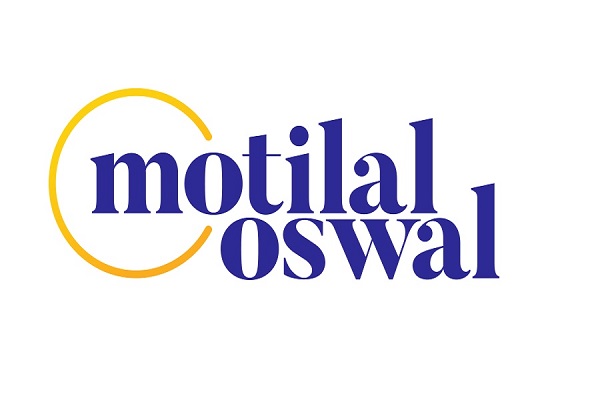


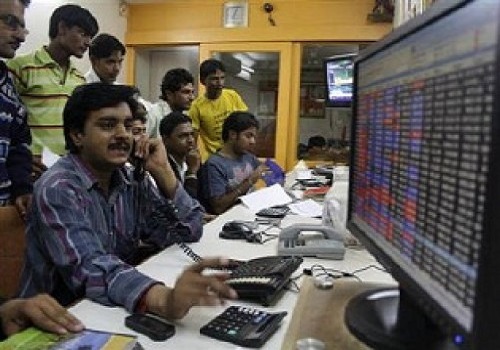



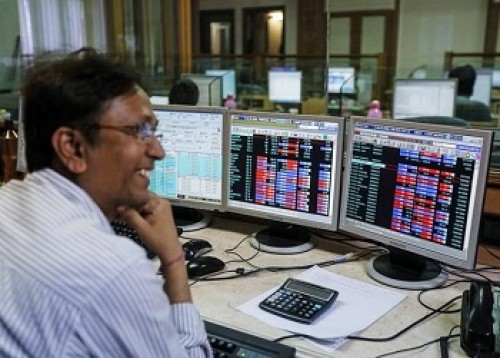


More News
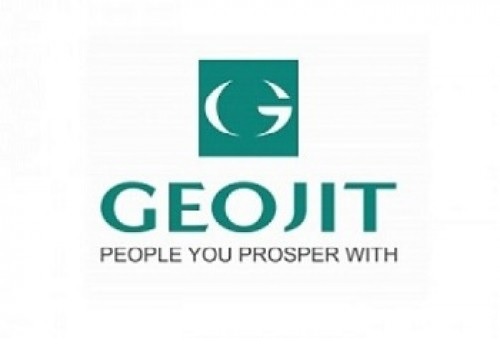
Commodity Intraday Technical Outlook 16 April 2025 - Geojit Financial Services Ltd







